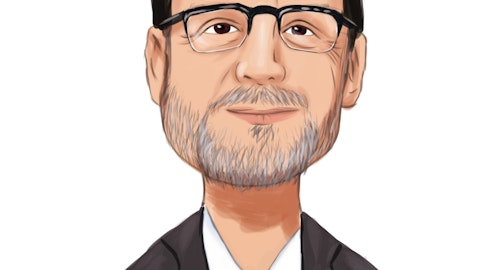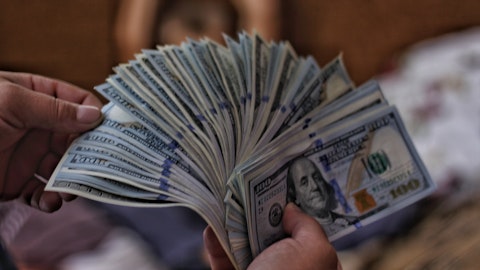Jonathan Hughes: I will have to go back and add up the numbers, but I think we can get a sense of where we will shake out from fourth quarter to first quarter. So I appreciate that. And then my one follow-up for — would be for Taylor on dividend coverage. You mentioned in yesterday’s press release for an expected increase in the payout ratio and then in your prepared remarks earlier for an expected shortfall in the dividend coverage in the first quarter, and Bob, you just gave us the components of that. But given these building blocks of operators coming back online in the second quarter and hopefully more in the back half of the year, does that trajectory of improving cash flow, give the Board comfort to maintain the current dividend. We are just trying to get a better sense of how they view the trade-offs between temporary shortfalls and returning that capital to shareholders? Thanks.
Taylor Pickett: Yeah. It definitely gives me comfort. I won’t speak for the whole Board because we make a decision every quarter based on what we see. But if you take the building blocks that Bob talked about, the next step is to connect the dots from Q1 to Q2 and so you have a number of operators in Q1 that are not paying or partially paying and we should see a big pickup in Q2. And so that’s the piece that’s missing, but to the — with Agemo coming back on, the transition of the 2.4% operator, which should go at approximately rent, very little diminution. Those are big moving parts that are — that get us back into a reasonably comfortable FAD from a dividend perspective.
Jonathan Hughes: All right. Thanks for the time.
Operator: The next question is from Michael Griffin with Citi. Please go ahead.
Michael Griffin: Great. Thanks. Just going back to the LaVie rent deferrals. I mean, how concerned should we be that down the road, this could turn into, I guess, some form of rent reduction. And then have you gamed out a scenario, where you could allow X amount of rent reductions and still kind of keep the dividend intact?
Bob Stephenson: Yeah. So on the LaVie question, we did identified, if you will, sort of the bottom tier of their assets in their portfolio and we discussed we have sold some of those already and we anticipate selling some other ones here in the first half of the year. And we think those two sales will bring the overall portfolio back into the black, back in the coverage that we have seen historically and that the rent deferrals will have a finite period of time.
Michael Griffin: Got you. That’s helpful. And then just maybe on those potential asset sales that you mentioned. I mean it looks like there’s still private appetite out there, but just maybe it’s cooled so much given sort of lack of bridge to HUD financing out there. I am curious what you are seeing in the transaction market and if any of these potential sales occur in the future, could we see seller financing to act on similar to the sale earlier this year, end of last year?
Bob Stephenson: Yeah. So the capital markets obviously have cooled, rates have gone up, it’s become more difficult, hence, the seller take back paper that we did in the fourth quarter. Right now, actually, our — most of our restructures involve releases, not sales. So the capital markets don’t come into play and that’s kind of what we see out in the future a little bit more transitions via releases than actual asset sales. So we are hoping not to rely and we are open — our new operators will not have to rely on the capital markets.
Michael Griffin: All right. That’s it for me. Thanks for the time.
Operator: The next question is from Steven Valiquette with Barclays. Please go ahead.





